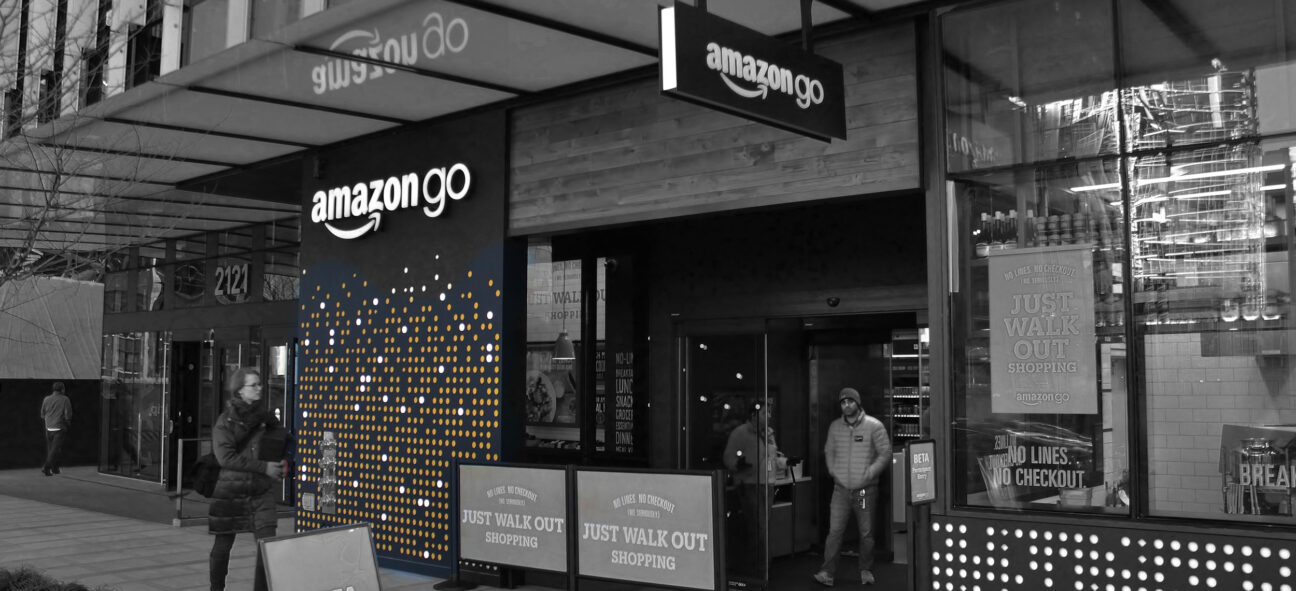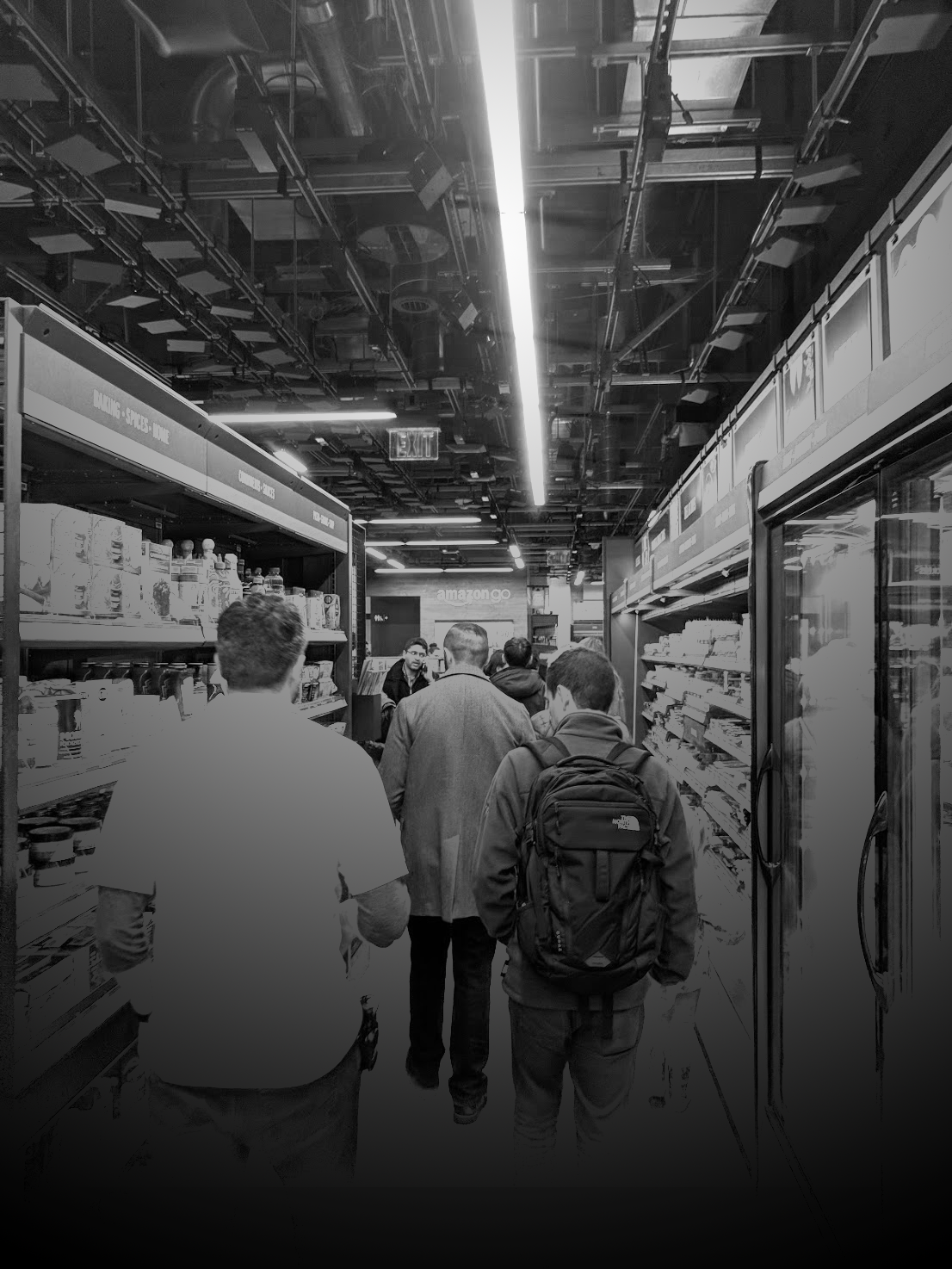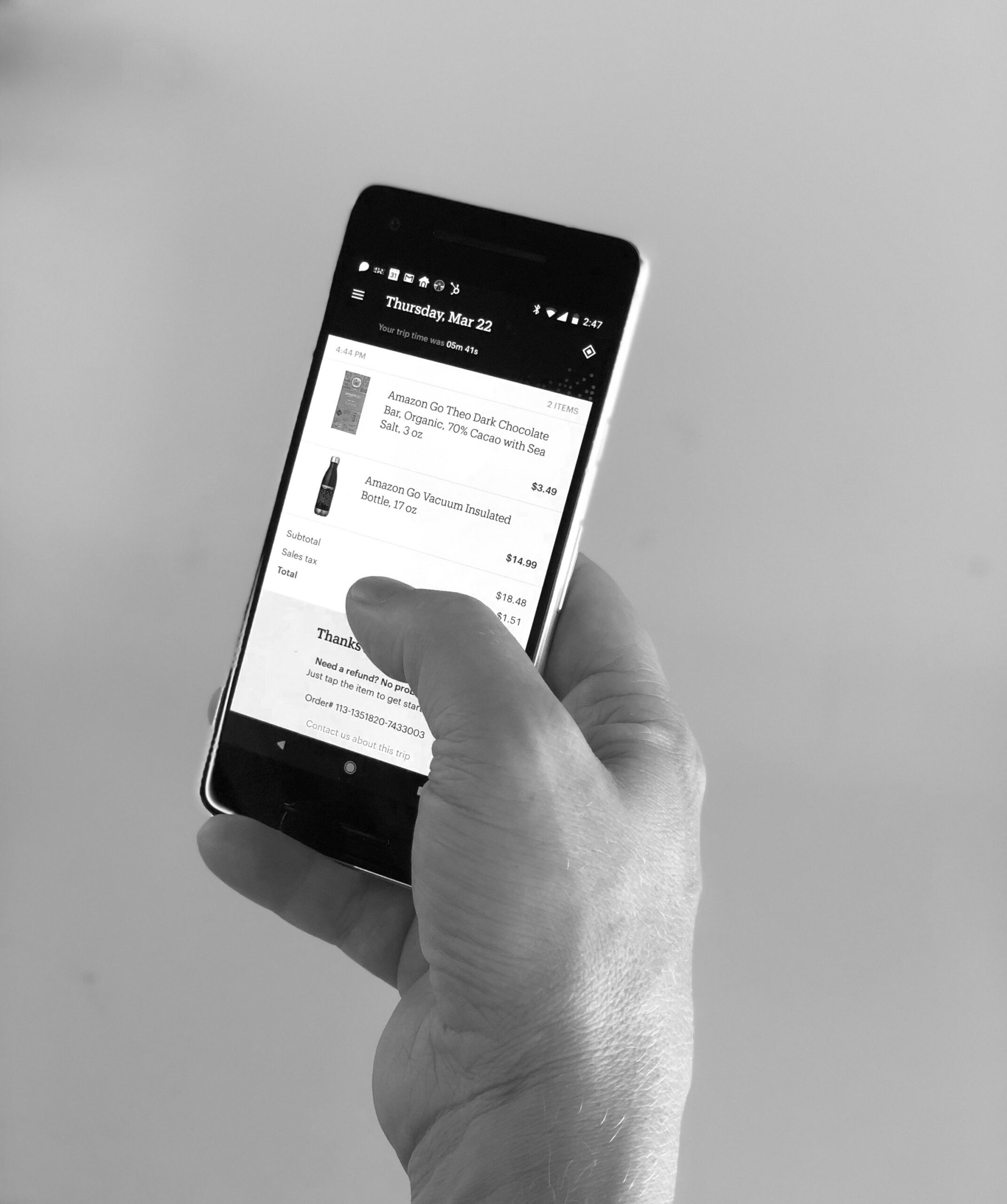A few weeks ago, we — two Jayway’ers from our Palo Alto studio — went to Seattle with a client for workshops with Amazon. Since we have wanted to try it for some time, we couldn’t resist a visit to Amazon Go when visiting the Amazon HQ.
Amazon Go is a shopping experience with no cashier or even a checkout touch point. You enter the store with the Amazon Go app, grab whatever items you want and then just leave without having to wait in line to pay. Amazon Go uses computer vision, sensors, and deep learning to track you and the items you choose in the store.
In this short article, we want to share a few of our observations and reflections about the Amazon Go shopping experience.

“Did I actually pay?”
For a while, most new innovations in grocery shopping have aimed at lowering the friction surrounding the actual payments. We have seen solutions with mobile payments, contactless payments, smartwatch payments and more. Even though better payment options improve the customer experience the real culprit in the process is most often the checkout itself, and this is something Amazon really addresses with Amazon Go.
We already have solutions that digitize the checkout in grocery stores. The most widespread solution is self-checkout, where people perform the checkout themselves. But other checkout mechanisms also exist, like Walmart’s Check Out With Me or Scan & Go.
What sets Amazon apart from other solutions is the complete absence of a point-of-sale. Rather than trying to rethink customer checkout, Amazon has removed it from the shopping experience entirely. Instead, items you pick up are automatically added to your app and paid for once you leave the store. There have been reports of people (accidentally) stealing products in Amazon Go. But for all the six people we went shopping with, everything worked smoothly.
The technology behind Amazon includes a lot of cameras, computer vision, deep learning and “sensor fusions”, which probably include shelf scales measuring the weight of the products and other sensors.
The system did feel really robust and our attempts to trick the systems — by putting six chocolate bars in a bag and then putting back some of them — were all fruitless. Allegedly, three Amazon employees all dressed as Pikachu tried to confuse the system last Halloween. But their attempts were also unsuccessful.
The no-checkout shopping experience is the true innovation in Amazon Go. But it is also what left us feeling weirded out and insecure. After we left the store, everyone stood still and waited for confirmation that they actually paid for their purchases.
It took only 4–5 minutes before we got the receipts on our phones. But until then, everyone was constantly checking their phones to make sure they weren’t accidental shoplifters.
A weird experience of how grocery shopping should feel
As with every new technology, people need time to adapt to new use patterns and behaviours. We will eventually learn not to freak out about cashier-less shopping once Amazon Go — or similar technologies — are implemented in everyday grocery shopping. And at some point, it will stop feeling weird or magical, but become part of our daily routines.
At first, we felt weird about leaving the store without a physical payment point. But we also talked about how right it actually felt. It feels like the natural next step from self-checkout. It feels seamless in a way that grocery shopping ought to be.
But why do we need to check in?
One thing we have discussed after returning to our offices in Silicon Valley is the check-in counters. Is it really necessary to check in before getting into the store? If we can just leave the store, why can’t we enter without activating our virtual shopping carts?
It is probably because of security (e.g., by unlocking your phone to scan your QR code to enter). But to achieve a truly seamless shopping experience, it seems only logical that Amazon should work towards removing the need for physical touch points in the shopping experience altogether.
All in all it was a (weird) experience of how grocery shopping probably is going to be in the years to come. Amazon has not yet revealed any plans for more stores or scaling up the service in any way. Given the amount of tech involved in creating the experience and amount of computing power needed it is probably still a lot viable to hire people to handle the stores. Tech is advancing at an ever increasing pace so it might not be too far into the future that we will see similar shopping experiences in stores around us.


